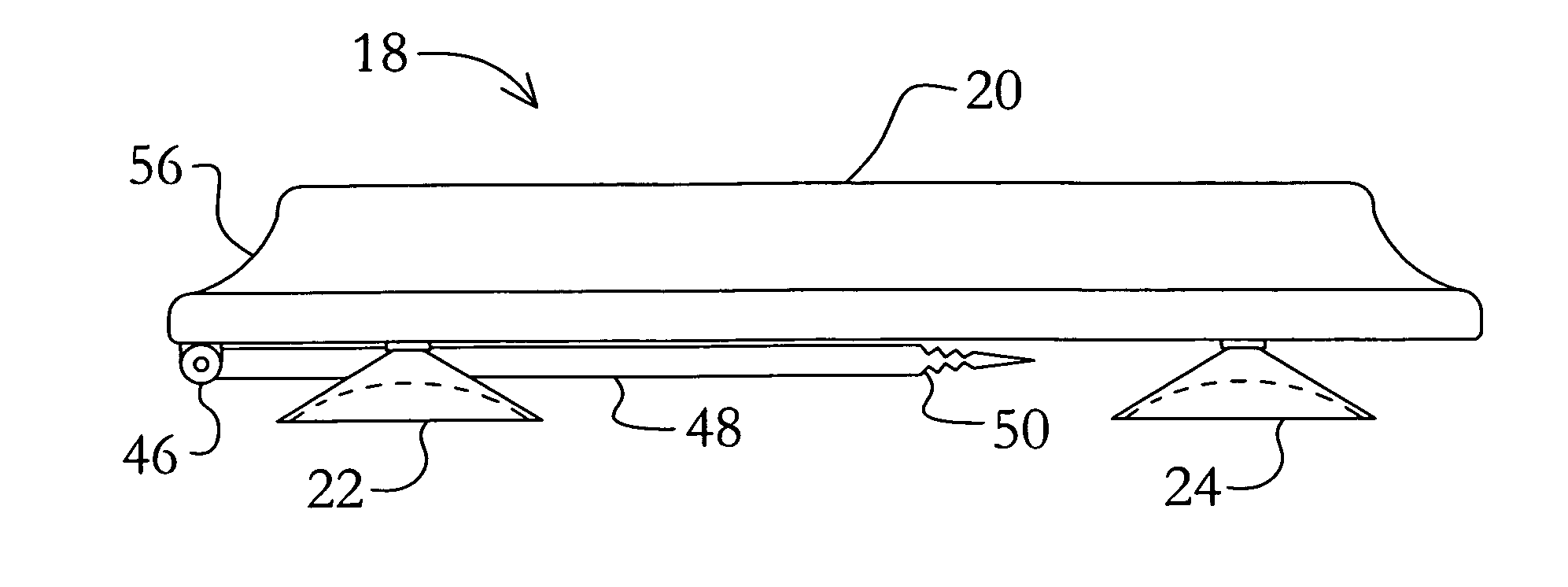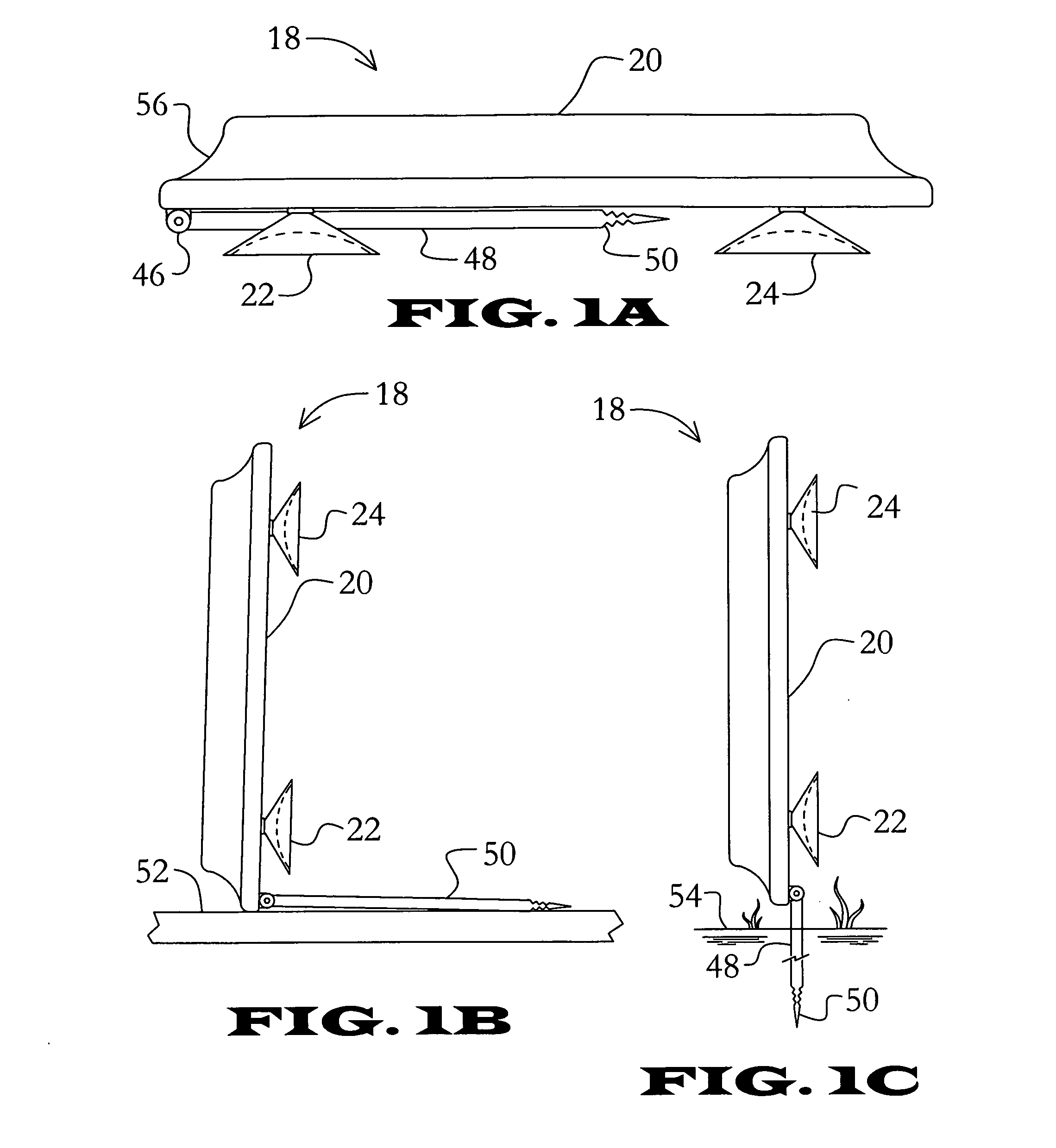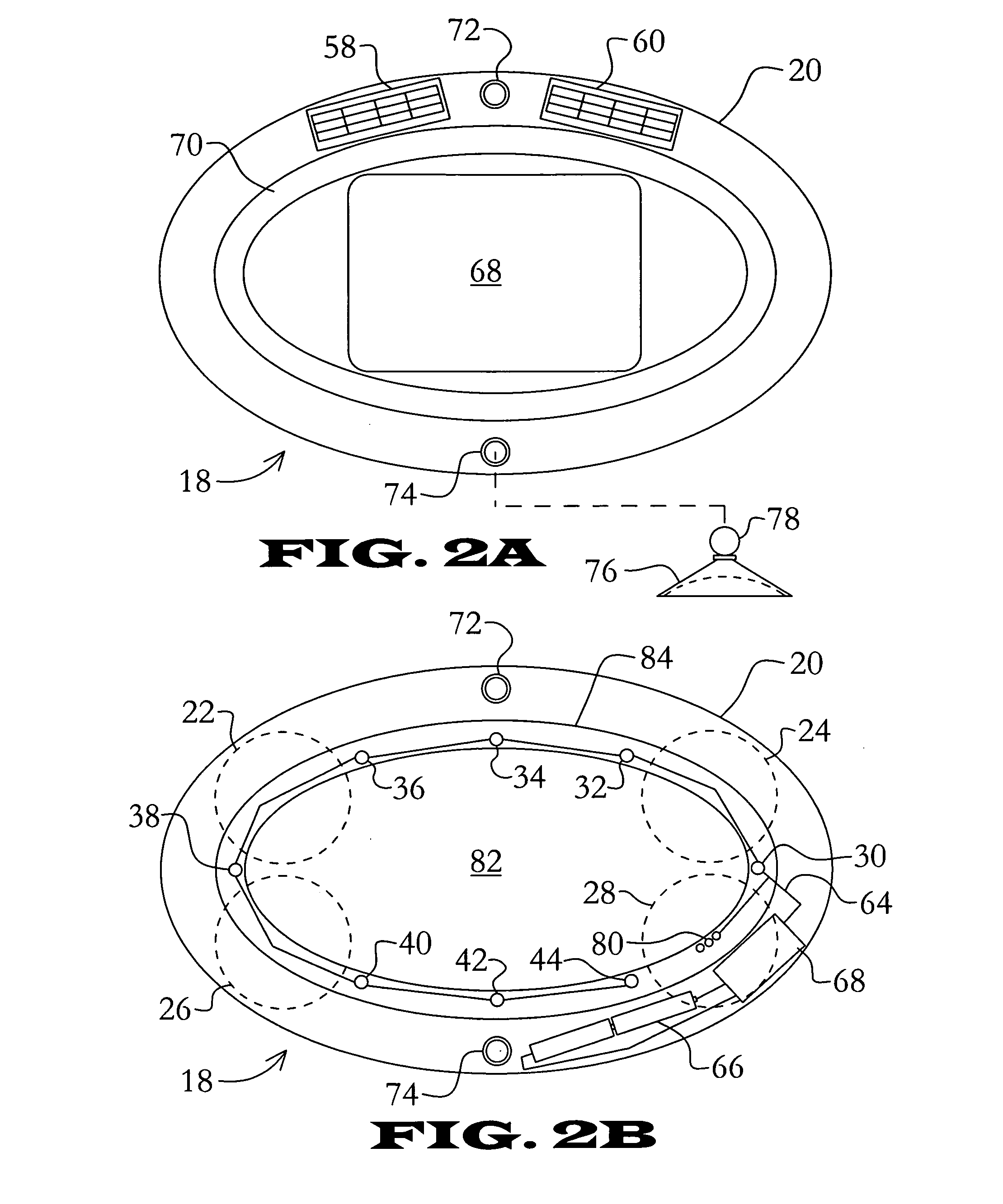Portable changeable illuminated display for vehicles and other miscellaneous purposes
a technology for changing lights and illuminated displays, which is applied to illuminated signs, displays, boards, etc., can solve the problems of requiring large amounts of current draw and significant maintenance, lack of portability enabling them to be removed, and more limited use, so as to facilitate and quick exchange, prevent damage from impact, and easy to remove and reposition
- Summary
- Abstract
- Description
- Claims
- Application Information
AI Technical Summary
Benefits of technology
Problems solved by technology
Method used
Image
Examples
Embodiment Construction
[0049]mountable signage enclosure 18[0050]molded frame 20[0051]suction cup 22, 24, 26, 28[0052]LED 30, 32, 34, 36, 38, 40, 42, 44[0053]hinge 46[0054]support arm 48[0055]pointed stake 50[0056]surface 52[0057]ground 54[0058]aerodynamic beveling 56[0059]photovoltaic cell 58, 60[0060]switching circuit 62[0061]wire 64[0062]battery 66[0063]plastic window 68[0064]insert 70[0065]attachment socket 72, 74[0066]detachable suction cup 76[0067]stud 78[0068]contacts 80[0069]encasement 82[0070]lip 84[0071]powered sign 85[0072]fabric material 86[0073]graphic 87[0074]plastic optical fibers 88, 90, 92[0075]bundle 94[0076]LED 96[0077]substrate 98[0078]wire 100[0079]jack 102[0080]EL display 104[0081]PCB 106[0082]plastic surface 108[0083]substrate 110[0084]magnet 112, 114, 116[0085]rail 118, 120[0086]jack 122[0087]flexible covering 124[0088]metallic surface 126[0089]stake 128[0090]locking tab 130[0091]extension arm 132[0092]hole 134[0093]mount 136[0094]stud 138, 140[0095]extension 142[0096]rear 144
[0097...
PUM
 Login to View More
Login to View More Abstract
Description
Claims
Application Information
 Login to View More
Login to View More - R&D
- Intellectual Property
- Life Sciences
- Materials
- Tech Scout
- Unparalleled Data Quality
- Higher Quality Content
- 60% Fewer Hallucinations
Browse by: Latest US Patents, China's latest patents, Technical Efficacy Thesaurus, Application Domain, Technology Topic, Popular Technical Reports.
© 2025 PatSnap. All rights reserved.Legal|Privacy policy|Modern Slavery Act Transparency Statement|Sitemap|About US| Contact US: help@patsnap.com



